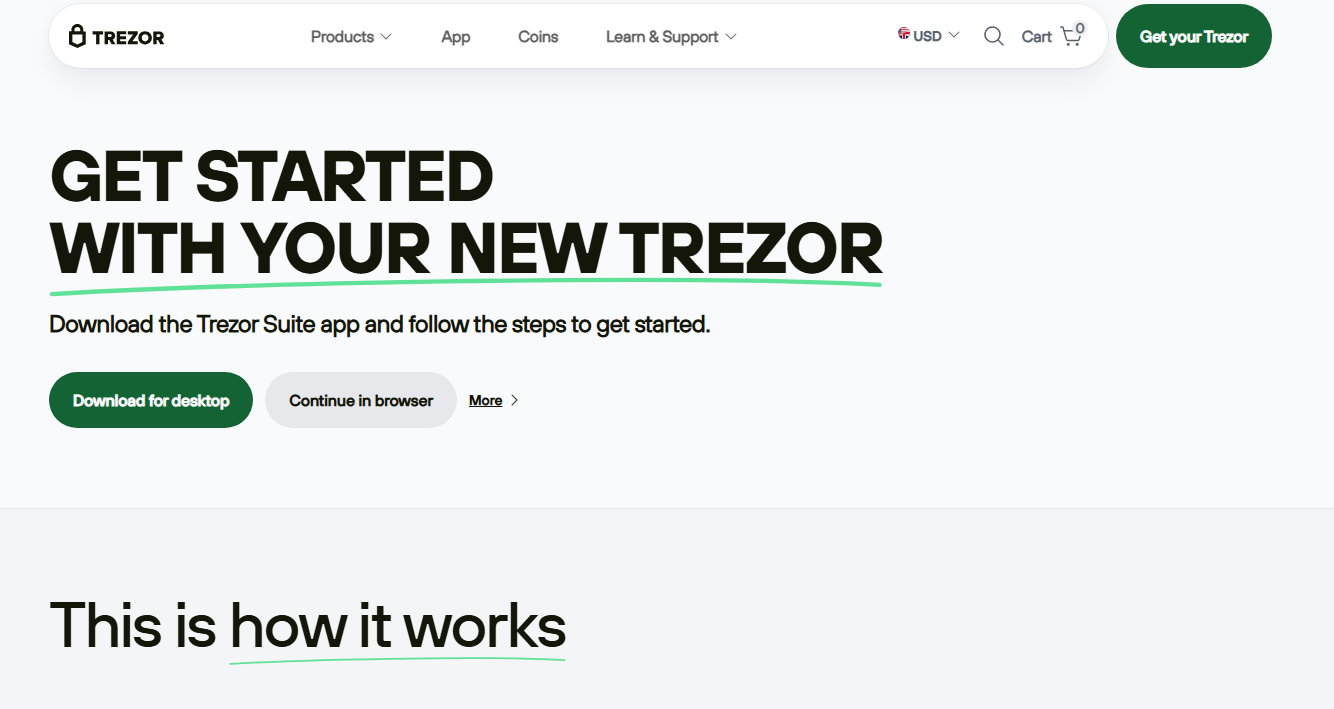The Ultimate Guide to Trezor.io/start: Secure Your Crypto Like a Pro
Whether you’re just stepping into the world of crypto or looking to level up your security, this guide will walk you through Trezor.io/start and how to safely manage your digital assets.
Why Crypto Security Matters
Imagine storing your life savings in a vault that anyone can open. Sounds risky, right? That’s what it’s like to leave your cryptocurrencies on an exchange or unprotected software wallet. Crypto security is not just a precaution—it’s a necessity.
With rising cyber threats, phishing scams, and hacking attempts, securing your assets is more critical than ever. That’s where Trezor.io/start comes in—offering a simple, reliable path to protect your investments.
Quick Fact:
Hardware wallets store your private keys offline, keeping hackers and malware at bay. Unlike software wallets, they offer an unmatched layer of security.
Getting Started with Trezor.io/start
Starting your Trezor journey is straightforward. Here's a step-by-step guide to help beginners and intermediate users alike:
- Purchase a Trezor device from official sources. Avoid third-party marketplaces to prevent tampered devices.
- Visit Trezor.io/start to access the official setup page.
- Connect your Trezor device to your computer using the supplied USB cable.
- Follow on-screen instructions to install the Trezor Bridge or use the web interface for initialization.
- Create a backup by writing down your recovery seed. Store it securely offline—never digitally.
- Set a PIN code for extra protection. Make it memorable yet secure.
By the end of these steps, your Trezor wallet is ready to safely store Bitcoin, Ethereum, and hundreds of other cryptocurrencies.
Beginner vs. Mid-Level Crypto User: Using Trezor Effectively
Beginners
- Focus on storing your crypto securely without juggling multiple wallets.
- Use Trezor’s easy interface to send/receive crypto.
- Learn basic security best practices: PINs, recovery seed, phishing awareness.
Mid-Level Users
- Leverage multi-asset support and manage advanced transactions.
- Use Trezor Suite for portfolio tracking and analytics.
- Integrate with DeFi apps and staking platforms safely.
Comparison: Trezor vs. Software Wallets
| Feature | Trezor Hardware Wallet | Software Wallet |
|---|---|---|
| Security | Offline storage; immune to malware | Connected to internet; vulnerable to hacks |
| Ease of Use | User-friendly interface; slightly learning curve | Very easy; instant setup |
| Backup | Recovery seed stored offline | Depends on software; often cloud-based |
| Cost | Paid device | Mostly free |
Pro Tip:
Always double-check the URL when accessing Trezor.io/start to avoid phishing sites. Bookmark the page to ensure safe access every time.
Frequently Asked Questions (FAQs)
1. Can I use Trezor for multiple cryptocurrencies?
Yes! Trezor supports Bitcoin, Ethereum, and over 1,800 other assets. You can manage them all securely from a single device.
2. What happens if I lose my Trezor device?
Your recovery seed allows you to restore your wallet on a new device. Store it safely offline to prevent loss or theft.
3. Is Trezor compatible with DeFi apps?
Absolutely. Trezor integrates with many DeFi platforms while keeping your private keys offline for enhanced security.
4. How often should I update my Trezor firmware?
Regular updates are recommended to stay protected against vulnerabilities. Trezor will prompt you when a new firmware version is available.
Conclusion
Securing your crypto doesn’t have to be complicated. By following Trezor.io/start, both beginners and mid-level users can safely manage and grow their digital assets. With offline key storage, easy setup, and robust compatibility, Trezor provides peace of mind in the fast-paced crypto world. Start your journey today and protect what’s yours.
